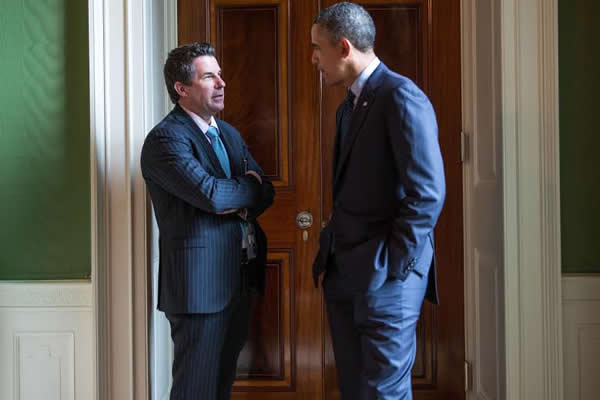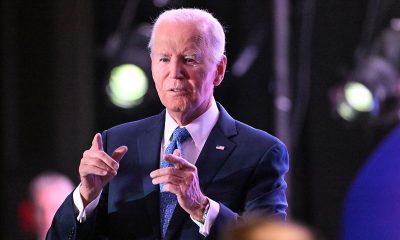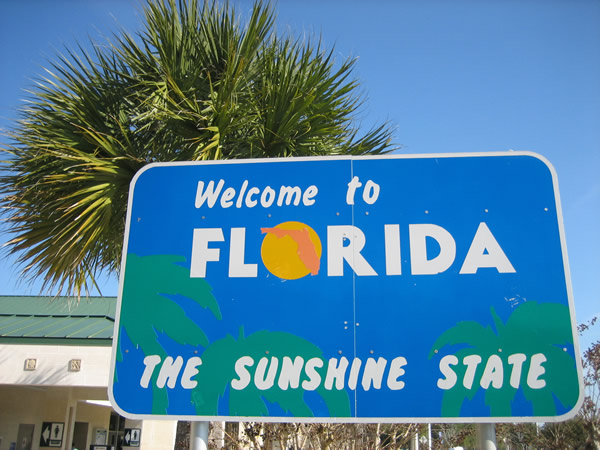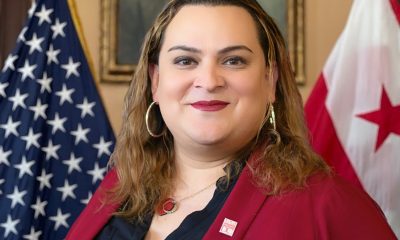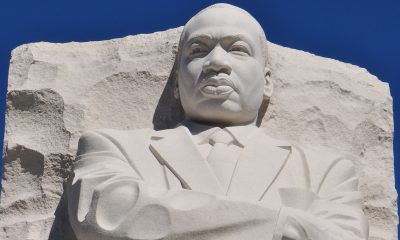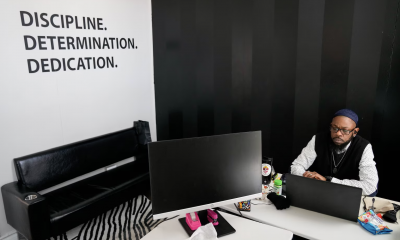a&e features
Summer 2016 movie preview
Upcoming releases offer blockbusters, franchises, festivals and more


Joanna Lumley and Jennifer Saunders in ‘Absolutely Fabulous: the Movie.’ (Photo courtesy the Karpel Group)
The 2016 summer movie season gets off to an explosive start this weekend with “The Angry Birds Movie.” The wildly popular video game gets turned into a 3-D animated comedy featuring the voices of Jason Sudeikis, Maya Rudolph, Bill Hader, Peter Dinklage and Josh Gad.
Following in the wake of the furious fowls are an exciting mix of blockbusters and independent releases, along with films large and small that may have special appeal to LGBT audiences.
The summer schedule is, of course, full of franchise movies and action-filled blockbusters. The anticipated line-up includes “X Men: Apocalypse” (May 27); “Alice Through The Looking-Glass” a follow-up to Tim Burton’s 2010 spectacular retelling of the beloved Lewis Carroll tale, now under the direction of James Bobin, but with returning stars Johnny Depp, Anne Hathaway, Mia Wasikowska, Helena Bonham Carter and Alan Rickman (in his final screen performance); Megan Fox and friends in “Teenage Mutant Ninja Turtles: Out of The Shadows” (June 3); “Independence Day Resurgence” (June 24); the all-female remake of “Ghostbusters” (July 15); and out actor Zachary Quinto as Spock in “Star Trek Beyond” (July 22).
Some summer mainstream releases will be of special interest to LGBT audiences. In a surprise move, actor Dave Franco (brother of polymath artist James) and director Nicholas Stoller of “Neighbors 2: Sorority Rising” (opening Friday, May 20) revealed that the “homoerotic tendencies” displayed by the character Pete in the first movie will lead to a same-sex marriage proposal in the sequel.
America’s favorite lesbian Ellen DeGeneres returns to the big screen on June 17 as the voice of the title character, a blue tang with memory issues, in Disney-Pixar’s “Finding Dory.”
Accompanied by other members of the cast of the popular BBC sitcom, aging party girls Edina Monsoon (series co-creator Jennifer Saunders) and Patsy Stone (Joanna Lumley) stumble onto the big screen in “Absolutely Fabulous: The Movie” on July 22. And on Aug. 12, Meryl Streep massacres the world of grand opera as “Florence Foster Jenkins,” a would-be opera diva with lots of money and enthusiasm, but no talent.
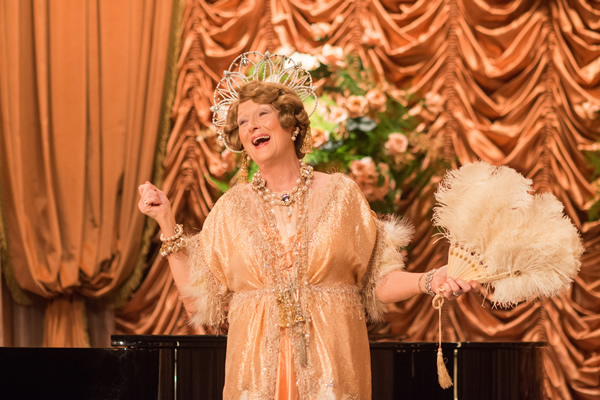
Meryl Streep as the tone-deaf diva in ‘Florence Foster Jenkins.’ (Photo by Nick Wall; courtesy Paramount Pictures)
With significantly less fanfare, some notable independent features will be blooming in D.C. cinemas this summer. Opening on Friday, May 20 is “Love & Friendship” starring Kate Beckinsale with stellar support from Chloё Sevigny, Jemma Redgrave and Stephen Fry. Best known for his explorations of American upper-class ennui, director Whit Stillman offers a fresh and funny take on an early and relatively unknown Jane Austen comic novella.
Also opening this weekend, creating the opportunity for a wonderful double feature, are “The Lobster,” a sci-fi thriller starring Colin Farrell about a society that outlaws single people (both gay and straight); and “Sunset Song” a sweeping saga about Scottish farmers during World War I by gay filmmaker Terence Davies (“The House of Mirth” and “The Deep Blue Sea”).
Opening Friday May 27 is “Maggie’s Plan,” a delightful modern-day comedy of manners starring Greta Gerwig and featuring a very funny Julianne Moore.
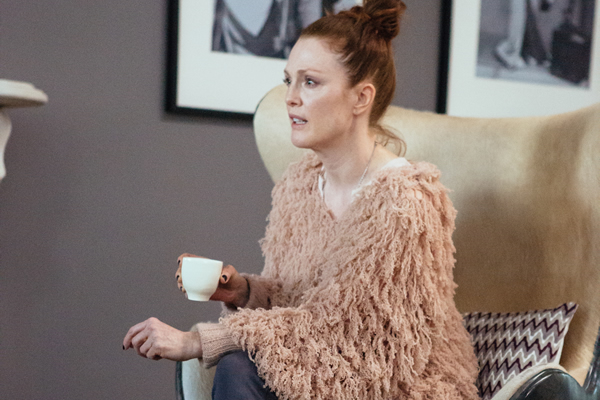
Julianne More explores her comic side in ‘Maggie’s Plan.’ (Photo courtesy Sony Pictures Classics)
Despite the inevitable giggles about the title, the independent movie tone turns more serious in “Weiner,” a documentary about disgraced politician Anthony Weiner’s ill-advised 2013 campaign to become mayor of New York City (May 27). On June 3, the Angelika Pop-Up at Union Market will present “Art Bastard,” a documentary about controversial artist Robert Cenedella who has been described as “the anti-Warhol.”
The screen will glitter with star power (and Oscar buzz will ignite) when the highly anticipated “Genius,” which opens June 10. Written by Academy Award-nominated screenwriter John Logan (“Gladiator,” “The Aviator,” “Hugo” and “Skyfall”) and directed by openly gay Tony Award-winning director Michael Grandage (from London’s acclaimed Donmar Warehouse theater), the drama explores the complex relationship between editor Maxwell Perkins (Colin Firth) and writer Thomas Wolfe (Jude Law). The A-list cast also includes Nicole Kidman, Laura Linney, Guy Pearce and Dominic West.
The Reel Affirmations monthly XTRA film series (reelaffirmations.org) continues with “Wilhemina’s War,” a moving and thought-provoking documentary that profiles Wilhemina Dixon, a 62-year-old black woman in South Carolina who is caring for her daughter and granddaughter, both of whom are HIV-positive. Filmmaker June Cross captures both Wilhemina’s daily struggles against AIDS stigma and the larger social issues of poverty, racism and sexism, women’s health care and the ongoing spread of HIV in the South. “Wilhemina’s War” will be screened on Friday, June 17. The weekend-long Reel Affirmations Film Festival will return in October.
As part of its year-round film programming, the Washington Jewish Film Festival (wjff.org) will present “Those People,” (June 21) a moving story about love and art on Manhattan’s glitzy Upper East Side.
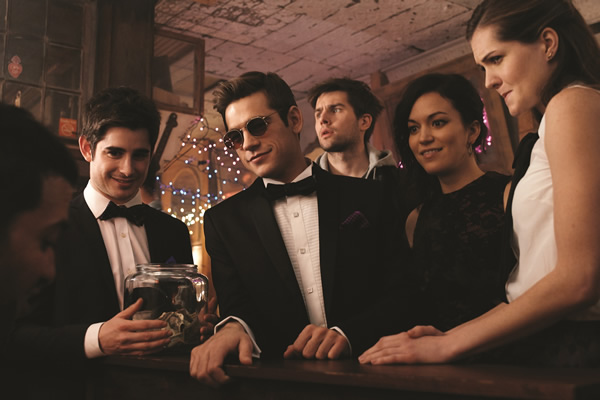
A scene from ‘Those People,’ part of this summer’s film series at the Washington Jewish Film Festival. (Still courtesy WJFF)
From June 22-26, AFI Docs (afi.com/afidocs), the American Film Institute’s magnificent annual celebration of the documentary, will bring 94 new documentaries to the region. Under the direction of openly gay director Michael Lumpkin, AFI screeners selected these films from hundreds of submissions to highlight the amazing range of techniques and topics in contemporary documentary filmmaking.
The opening night gala will feature “Zero Days” by Academy Award-winning director Alex Gibney. After provocative documentaries about Enron, WikiLeaks, Steve Jobs and Scientology, Gibney’s latest film exposes the dangerous new world of cyber warfare. The closing night gala features “Norman Lear: Just Another Version of You,” a portrait of the man who changed television history with shows like “All in the Family” and “Maude,” and who changed the national political dialogue by founding People for the American Way. Both galas will be held at the Newseum.
On Friday, June 24, the AFI Guggenheim Symposium will honor legendary filmmaker Werner Herzog. The symposium will include clips from Herzog’s documentaries, a panel discussion and the East Coast premiere of Herzog’s latest film, “Lo and Behold: Reveries of the Connected World.”
On Saturday, June 24, AFI Docs offers a screening of “Check It” by Toby Oppenheimer and local filmmaker Dana Flor. The film profiles a fascinating group of LGBT D.C. youth who form a gang to protect themselves against violent attacks. They then decide to turn their efforts in a more positive direction, trying to break the brutal cycles of violence, poverty and prostitution by forming their own clothing label.
AFI Docs will screen at the AFI Silver in downtown Silver Spring, the Landmark E Street Cinema in downtown D.C. and other venues throughout the area.
In addition to serving as a venue for AFI Docs, AFI Silver (afi.com/silver) has a slate of innovative programming this summer. AFI shows both the latest independent releases along with lovingly curated celebrations of Hollywood and international cinema. Its summer programming kicks off with the inaugural “Washington, D.C. Fantastic Film Festival,” a showcase of the best (and worst) of genre cinema. Highlights include “Batman: the Movie,” the campy precursor to today’s superhero blockbusters, and “Trekoff: the Movie,” a cinematic version of the raunchy podcast that bills itself as “the funniest, dirtiest ‘Star Trek’ podcast you’ve ever heard.”
Other AFI summer programming includes “The Festival of New Spanish Cinema” (June 16-19), celebrations of distinguished actor Gregory Peck and radical screenwriter Dalton Trumbo, the “Best Of” showcase from D.C.’s remarkable 48 Hour Film Project (May 26), and the return of the beloved “Internet Cat Video Festival” from June 25-26.
HBO and Logo will also present new documentaries to mark Gay Pride month. On Monday, June 13, Logo will air “Out of Iraq,” which chronicles the love story between an Iraqi soldier and an Iraqi translator, both working with the U.S. military, that unfolds in a war-torn country where homosexuality is banned. HBO will air “Suited,” a fascinating movie about a London bespoke tailor who specializes in creating fashions that fit the specific needs of the gender non-conforming clients, and “Mariela Castro’s March” about the fight for LGBT rights in Cuba.
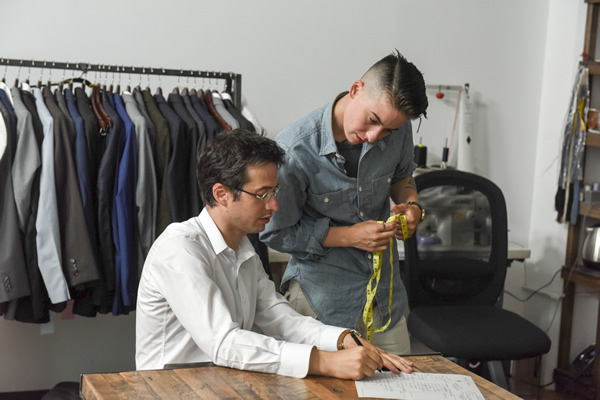
Bespoke tailor Daniel Friedman at work with colleague Rae Tutera in HBO’s ‘Suited.’ (Photo by JoJo Whilden; courtesy HBO)
Finally, the ultimate summer date movie is slated to open on Aug. 26. “Southside with You” recounts the first date between two young Chicago lawyers named Barack Obama (Parker Sawyers) and Michelle Robinson (Tika Sumpter). The world-changing daylong event included a trip to the Art Institute of Chicago, a screening of Spike Lee’s controversial “Do The Right Thing,” and their first kiss outside an ice cream parlor. “Southside with You” should be the perfect transition from the heat of D.C. summer to the heated passions of the fall election season.
a&e features
Visible and unapologetic: MAL brings the kink this weekend
Busy lineup includes dances, pups, super heroes, and more
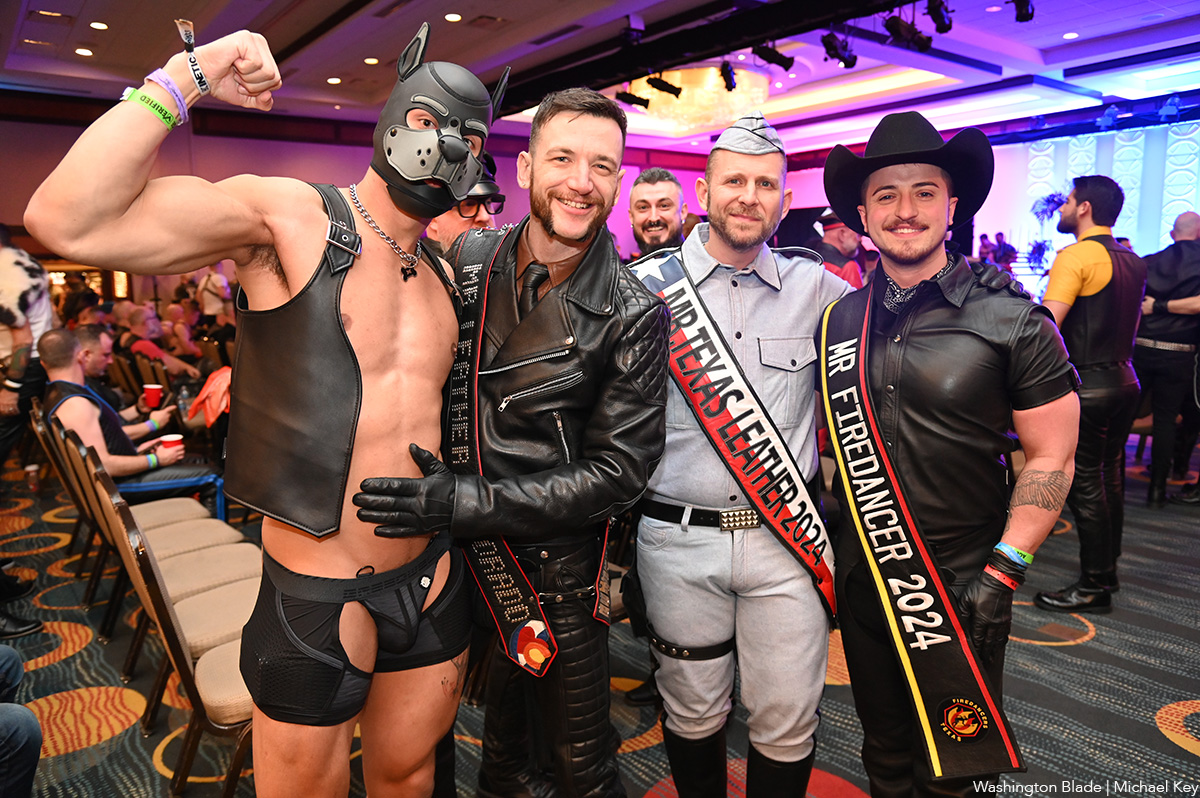
MLK Weekend in D.C. brings the annual Mid-Atlantic Leather (MAL) Weekend. Just a short walk from where Congress has been attacking queer Americans this year, MAL takes place at the Hyatt Regency Washington for several days of intrigue, excitement, leather, and kink.
The Centaur Motorcycle Club — one of several similar groups dedicated to leather in the country — has been hosting MAL in its current form for more than 40 years. Originally a small gathering of like-minded people interested in the leather lifestyle, MAL has grown to include a full four days of events, taking place onsite at the Hyatt Regency Washington (400 New Jersey Ave., N.W.). Select partner happenings take place each night, and many more non-affiliated events are scattered across the DMV in honor of and inspired by MAL.
MAL Weekend has become an internationally renowned event that celebrates fetish culture, yet it also raises funds for LGBTQ organizations, “reinforcing its legacy as both a cultural and philanthropic cornerstone of the global leather community,” according to MAL organizers.
During the day, MAL events at the Hyatt include workshops, social gatherings, shopping, and other in-person engagements for the community.
“The Hyatt underwent an extensive top to bottom renovation after last year’s event,” says Jeffrey LeGrand-Douglass, the event chair. The lobby, meeting spaces, guest rooms, and other areas have been updated, he notes, “so I am very excited for our guests to experience the new design and layout for the first time. And of course as with every year, we look forward to the contest on Sunday afternoon and seeing who will become our new Mr. MAL.”
In the evening, MAL hands the reins to partner KINETIC Presents, the D.C.-based nightlife production company. KINETIC will host four consecutive nights of high-production events that fuse cutting-edge music, immersive environments, and performance. This year, KINETIC is popping open doors to new-to-MAL venues, international collabs, play zones, and a diverse lineup.
According to KINETIC managing partner Zach Renovátes, 2026 is the most extensive MAL production to date. “The talent lineup is unreal: an all-star roster of international DJs, plus drag superstar performances at the Saturday main event,” he says.
Renovátes added that he’s “most excited about the collaborations happening all weekend — from bringing in MACHO from WE Party Madrid, to teaming up with local leather groups, to nonprofit partners, and Masc Diva [a queer nightlife collective].”
Official MAL events begin on Thursday with the Full Package/Three Day Pass Pick-Up from 5:30-8:30 p.m. at the Hyatt.
Thursday night is also the KINETIC kickoff party, called LUST. Running 10 p.m. – 3 a.m., it’s being held at District Eagle. DJ Jay Garcia holds it down on the first floor, while DJ Mitch Ferrino spins in the expansive upstairs. LUST features special performances from the performers including Serg Shepard, Arrow, Chase, and Masterpiece.
Renovátes notes that the LUST opening party at District Eagle coincides with the bar’s grand re-opening weekend. The bar will unveil its new permanent home on the renovated second floor. “it felt like the perfect place to start Mid-Atlantic Leather weekend — right in D.C.’s only dedicated home for kink communities,” he says.
After Thursday night, Friday is when daytime events begin at the Hyatt. The Exhibit Hall, on the ballroom level below the lobby, hosts upwards of 30 vendors, exhibitors, and booths with leather goods, fetish wear, clothes, toys, other accessories, providing hours of time to shop and connect with attendees and business owners. The Exhibit Hall will be open on Friday from 4-10 p.m., as well as on Saturday and Sunday afternoons.
DC Health is once again back at MAL, to provide preventative health services. In the past, DC Health has provided MPox vaccines, Doxy PEP, HIV testing, Narcan kits, and fentanyl test strips. This booth will be open on Friday 4-10 p.m.
Later, at 6 p.m., the Centaur MC is holding its welcome reception on the ballroom floor. After the Centaur’s Welcome Reception, the MIR Rubber Social is 8-11 p.m. A Recovery Meeting is scheduled at 10 p.m.
Many attendees enjoy visiting the guest room levels of the hotel. Note that to get in an elevator up to a hotel room, a staff member will check for a hotel room wristband. Non-registered guests can only access host hotel rooms if they are escorted by a registered guest with a valid wristband. Registered guests are permitted to escort only one non-registered guest at a time. Non-registered guests with a wristband who are already in the hotel before 10 p.m. may remain until midnight. However, non-registered guests without a wristband will not be admitted after registration closes.
Friday night, for the first time, KINETIC Presents is joining forces with WE Party to bring MACHO to Washington, D.C. This official MAL Friday event delivers two stages and two genres. On the UNCUT XXL stage, international Brazilian circuit superstars Erik Vilar and Anne Louise bring their signature high-energy sound. On the MACHO stage, Madrid’s Charly is joined by Chicago’s tech-house force, Karsten Sollors, for a blend of techno and tech house. UNCUT also features the XL Play Zone, a massive, immersive space exclusive to this event. The party takes place at the Berhta space from 10 p.m.-4 a.m..
“This year we’re bringing back the two-room format we debuted at WorldPride for both Friday and Saturday, so attendees can really tailor their experience — whether they’re in the mood for circuit or tech house.” says Renovátes.
Directly after Friday’s UNCUT XXL, UNDERWORLD Afters takes over District Eagle, from 3:30-8 a.m. International DJ Eliad Cohen commands the music.
Saturday, the Exhibit Hall opens earlier, at 11 a.m.. DC Health will also be back from 11 a.m. to 6 p.m.
Saturday is also time for one of the most anticipated events, the Puppy Mosh, running from 11 a.m. to 1 p.m. During the event, pup culture comes to life, when pups, handlers, and friends can enjoy an inclusive, safe pup zone. There is also a Recovery Meeting at 11 a.m., and the IML Judges Announcement takes place at noon.
The popular Super Hero Meet Up will be held 1:30 p.m. – 3 p.m., sponsored by One Magical Weekend, for cosplayers, comic enthusiasts, and their friends.
From 2-6 p.m., the Onyx Fashion Show will take place to showcase and highlight people of color in leather.
Finally, the Leather Cocktail Party – the original event of MAL – will be held 7-9 p.m. in the Ballroom. While this requires special tickets to attend, at 9 p.m. is the MAL cocktail party, which is open to wider attendees.
The last event of Saturday leaves the hotel, again a partnership with KINETIC. Kicking off at 10 p.m. and running until 4 a.m., it’s just the second time that KINETIC’s Saturday night party is an official MAL event and serves as the main weekend engagement.
Saturday night’s centerpiece is called KINK: Double Trouble. The night will feature a first-ever back-to-back set from international electronic music icons Nina Flowers and Alex Acosta on the Circuit/Tribal Stage. The other room – the Tech House Stage – curated by The Carry Nation and Rose, provides a darker, underground counterpoint, reinforcing the event’s musical depth and edge.
Beyond the DJs, KINETIC has called in the big shots for this party: “RuPaul’s Drag Race” legends Nymphia Wind and Plastique Tiara are set to headline. The party also takes place at Berhta.
Sunday, back at the hotel, there will be another Recovery Meeting at 10 a.m., and the Exhibit Hall opens again from 11 a.m.-5 p.m.
At 1 p.m., the anticipated and prestigious Mr. MAL Contest that celebrates the achievements of the leather community will be held in the Ballroom. This highly sought after title gives one man the power to become the Mid-Atlantic Leather man of the year. Sash and title winners must be (1) male, (2), a resident of North America, (3) At least 21 years of age; and (4) self-identify as gay. The first Mr. MAL was crowned in 1985. The Winner of Mr. MAL has the privilege of later competing in International Mr. Leather (IML) in Chicago on Memorial Day Weekend 2025.
From 4 p.m. to 12 a.m., MAL will hold its Game Night for the gaymers in attendance. There will also be a special screening of A24’s new film, “Pillion,” about a man who is swept off his feet when an enigmatic, impossibly handsome biker takes him on as his submissive.
Sunday closes with a community partner event produced by Masc Diva, featuring Horse Meat Disco with support from Coach Chris, at A.I. Warehouse in the Union Market district. It’s the same team that produced HMD during WorldPride at A.I. Warehouse.
Note that there are several types of passes for attendance to the hotel and parties. KINK VIP Weekend Passes include express entry, VIP areas, and enhanced amenities throughout the weekend, while MAL Full Weekend Package holders receive access to the official Sunday closing event.
At last year’s MAL events, KINETIC Presents raised more $150,000 for LGBTQ charities, and expects to match or exceed that impact in 2026.
Renovátes stated that “now more than ever, it’s important to create safe, affirming spaces for our community — but it’s just as important to be visible and unapologetic. We want to make it clear that the LGBTQ+ and leather communities aren’t going anywhere. We’ve fought too long and too hard to ever feel like we have to shrink ourselves again, no matter what the political climate looks like.”
In addition to the KINETIC events, various LGBTQ bars will hold parties celebrating the theme of the weekend. For example, Kiki, located on U Street NW, is hosting a party called KINKI, hosted by DJ Dez, on Saturday night. Sister bar Shakiki, on 9th Street NW, is hosting a party called Railed Out, a fetish-inspired party that features a play zone, on Thursday night. Flash, on U Street NW, will hold its infamous Flashy Sunday party to close out the weekend.
a&e features
Queer highlights of the 2026 Critics Choice Awards: Aunt Gladys, that ‘Heated Rivalry’ shoutout and more
Amy Madigan’s win in the supporting actress category puts her in serious contention to win the Oscar for ‘Weapons’

From Chelsea Handler shouting out Heated Rivalry in her opening monologue to Amy Madigan proving that horror performances can (and should) be taken seriously, the Critics Choice Awards provided plenty of iconic moments for queer movie fans to celebrate on the long road to Oscar night.
Handler kicked off the ceremony by recapping the biggest moments in pop culture last year, from Wicked: For Good to Sinners. She also made room to joke about the surprise hit TV sensation on everyone’s minds: “Shoutout to Heated Rivalry. Everyone loves it! Gay men love it, women love it, straight men who say they aren’t gay but work out at Equinox love it!”
The back-to-back wins for Jacob Elordi in Frankenstein and Amy Madigan in Weapons are notable, given the horror bias that awards voters typically have. Aunt Gladys instantly became a pop culture phenomenon within the LGBTQ+ community when Zach Cregger’s hit horror comedy released in August, but the thought that Madigan could be a serious awards contender for such a fun, out-there performance seemed improbable to most months ago. Now, considering the sheer amount of critics’ attention she’s received over the past month, there’s no denying she’s in the running for the Oscar.
“I really wasn’t expecting all of this because I thought people would like the movie, and I thought people would dig Gladys, but you love Gladys! I mean, it’s crazy,” Madigan said during her acceptance speech. “I get [sent] makeup tutorials and paintings. I even got one weird thing about how she’s a sex icon also, which I didn’t go too deep into that one.”
Over on the TV side, Rhea Seehorn won in the incredibly competitive best actress in a drama series category for her acclaimed performance as Carol in Pluribus, beating out the likes of Emmy winner Britt Lower for Severance, Carrie Coon for The White Lotus, and Bella Ramsey for The Last of Us. Pluribus, which was created by Breaking Bad’s showrunner Vince Gilligan, has been celebrated by audiences for its rich exploration of queer trauma and conversion therapy.
Jean Smart was Hack’s only win of the night, as Hannah Einbinder couldn’t repeat her Emmy victory in the supporting actress in a comedy series category against Janelle James, who nabbed a trophy for Abbott Elementary. Hacks lost the best comedy series award to The Studio, as it did at the Emmys in September. And in the limited series category, Erin Doherty repeated her Emmy success in supporting actress, joining in yet another Adolescence awards sweep.
As Oscar fans speculate on what these Critics Choice wins mean for future ceremonies, we have next week’s Golden Globes ceremony to look forward to on Jan. 11.
a&e features
Looking back at the 10 biggest A&E stories of 2025
‘Wicked,’ Lady Gaga’s new era, ‘Sexy’ Bailey and more

Although 2025 was a year marked by countless attacks on trans rights and political setbacks, the year also saw brilliant queer artists continuing to create art. From Cannes and Sundance Award winners now vying for Oscar consideration to pop icons entering new stages of their careers, queer people persevered to tell their stories through different media.
With the state of the world so uncertain, perhaps there’s no more vital time to celebrate our wins, as seen through some of this year’s top pop culture moments. While there’s no collection of 10 stories that fully encompass “the most important” news, here are some events that got the gays going:
10. ‘Mysterious Gaze of the Flamingo’ wins big at Cannes

The Cannes Film Festival has become a crucial start for films hoping to make their way to the Oscars, and first-time director Diego Céspedes won the top Un Certain Regard prize for his intimate western “The Mysterious Gaze of the Flamingo.” The film is set in the ‘80s and is intended as an allegory for the AIDS epidemic. Seeing a film that unpacks vital queer history win one of the most coveted awards at Cannes has been a huge point of pride in the independent filmmaking community.
Since the film bowed at Cannes, it has been selected as Chile’s Oscar entry in the Best International Feature race. Speaking with The Blade during the film’s AFI Fest run in October, Céspedes said: At first, I was kind of scared to have this campaign position in the times that we’re living [in] here. But at the same time, I think the Oscars mean a huge platform — a huge platform for art and politics.”
9. ‘The Last of Us’ returns for an even gayer season 2
While the first season of The Last of Us gave us one of TV’s most heartbreaking queer love stories in the episode “Long, Long Time,” Season 2 doubled down on its commitment to queer storytelling with the blossoming relationship between Ellie (Bella Ramsey) and Dina (Isabela Merced). The show expanded on the pair’s relationship in the original video game, making it perhaps the central dynamic to the entire season. That unfortunately came with more homophobic backlash on the internet, but those who checked out all the episodes saw a tender relationship form amid the show’s post-apocalyptic, often violent backdrop. For their performance, Ramsey was once again nominated for an Emmy, but Merced deserved just as much awards attention.
8. ‘Emilia Pérez’ sparks controversy
Jacques Audiard’s genre-bending trans musical “Emilia Pérez” proved to be an awards season juggernaut this time last year, winning the Golden Globe for Best Musical/Comedy. But when the lead star Karla Sofia Gascón’s racist, sexist, and homophobic old tweets resurfaced, the film’s Oscar campaign became a tough sell, especially after Netflix had tried so hard to sell Emilia Pérez as the “progressive” film to vote for. Mind you, the film had already received significant backlash from LGBTQ+ audiences and the Mexican community for its stereotypical and reductive portrayals, but the Gascón controversy made what was originally just social media backlash impossible to ignore. The only person who seemed to come out of the whole debacle unscathed was Zoe Saldaña, who won the Oscar for Best Supporting Actress over Ariana Grande.
7. ‘Sorry, Baby’ establishes Eva Victor as major talent
Back in January at the Sundance Film Festival, Eva Victor (known by many for her brand of sketch comedy) premiered their directorial debut “Sorry, Baby” to rave reviews, even winning the Waldo Salt Screening Award. Victor shadowed Jane Schoenbrun on the set of “I Saw the TV Glow,” and seeing Victor come into their own and establish such a strong voice immediately made them one of independent cinema’s most exciting new voices. A memorable scene in the film sees the main character, Agnes (played by Victor), struggling to check a box for male or female, just one example of how naturally queerness is woven into the fabric of the story.
Most recently, Victor was nominated for a Golden Globe for her performance in the film, and she’s represented in a category alongside Jennifer Lawrence (“Die My Love”), Jessie Buckley (“Hamnet”), Julia Roberts (“After the Hunt”), Renate Reinsve (“Sentimental Value”) and Tessa Thompson (“Hedda”). The film also received four Independent Spirit Award nominations overall.
6. Paul Reubens comes out in posthumous doc

While Paul Reubens never publicly came out as gay before passing away in 2023, the two-part documentary “Pee-wee as Himself” premiered back in May on HBO Max, giving the legendary comedian a chance to posthumously open up to the world. Directed by Matt Wolf, the documentary explores how Reubens found his alter ego Pee-Wee Herman and why he kept his private life private.
The documentary won an Emmy in the Outstanding Documentary or Nonfiction Special category and remains one of the most critically acclaimed titles of the year with a 100% Rotten Tomatoes score. Also worth noting, the National Geographic documentary Sally told the posthumous coming out story of Sally Ride through the help of her long-time partner, Tam O’Shaughnessy.
5. Lady Gaga releases ‘Mayhem’
Lady Gaga entered a new phase of her musical career with the release of Mayhem, her seventh album to date. From the frenzy-inducing pop hit Abracadabra to the memorable Bruno Mars duet featured on “Die With a Smile,” seeing Gaga return to her roots and make an album for the most die-hard of fans was especially rewarding after the underwhelming film releases of “House of Gucci” and “Joker: Folie à Deux.” Gaga has been touring with The Mayhem Ball since July, her first arena tour since 2018. She even extended her tour into 2026 with more North American dates, so the party isn’t stopping anytime soon. And Gaga is even set to make an appearance next May in “The Devil Wears Prada 2.”
4. Cynthia Erivo, Ariana Grande perform at the Oscars

While “Wicked: For Good” didn’t quite reach the heights of the first film, we will forever have Cynthia Erivo and Ariana Grande’s breathtaking live performance that opened the 97th Academy Awards. The pair sang a rendition of “Over the Rainbow,” “Home,” and “Defying Gravity,” paying proper homage to the original 1939 “Wizard of Oz.” Even non-Wicked fans can’t deny how magical and brilliantly staged this performance was. With both Erivo and Grande up for acting Oscars last year, they’re hoping to repeat success and make history with consecutive nominations. Either way, let’s hope there’s another live performance in the making, especially with two new original songs (The Girl in the Bubble and No Place Like Home) in the mix.
3. Indya Moore speaks out against Ryan Murphy
Indya Moore has consistently used social media as a platform for activism, and in September, posted a 30-minute Instagram live speaking out against “Pose” co-creator Ryan Murphy. Moore claimed that Murphy wasn’t being a true activist for trans people. “Ryan Murphy, we need you to do more. You need to address the racism, the violence, and the targeting of people on your productions, Ryan Murphy. You do need to make sure trans people are paid equally. Yes, Janet did the right thing,” Moore said. Murphy was also back in the headlines this year for the critically panned “All’s Fair” and the controversial “Monster: The Ed Gein Story” starring Laurie Metcalf and Charlie Hunnam.
2. Cole Escola wins Tony for Best Leading Actor
Few pop culture moments this year brought us together more than Cole Escola winning a Tony award for “Oh, Mary!” the Broadway show they created, wrote and starred in (we love a triple threat!) Escola made history by becoming the first nonbinary person to win a Tony in the leading actor category, and seeing them excitedly rush to the stage wearing a Bernadette Peters-inspired gown instantly became a viral social media moment.
The cherry on top of Escola’s major moment is the recent news that they are writing a Miss Piggy movie with Jennifer Lawrence and Emma Stone producing — news that also broke the internet for the better. We cannot wait!
1. Jonathan Bailey makes gay history as ‘Sexiest Man Alive’

The same year as his on-screen roles in blockbusters “Jurassic World Rebirth” and “Wicked: For Good,” Jonathan Bailey made history as the first openly gay man to be named People magazine’s “Sexiest Man Alive.” The fact that it took 40 years for an openly gay man to earn the title is a signifier of how far we still have to go with queer representation, and seeing Bailey celebrated is just one small step in the right direction.
“There’s so many people that want to do brilliant stuff who feel like they can’t,” he told PEOPLE, “and I know the LGBT sector is under immense threat at the moment. So it’s been amazing to meet people who have the expertise and see potential that I could have only dreamed of.” In 2024, Bailey founded the charity titled The Shameless Fund, which raises money for LGBTQ+ organizations.
-

 Local5 days ago
Local5 days agoComings & Goings
-

 District of Columbia5 days ago
District of Columbia5 days agoD.C.’s annual MLK Peace Walk and Parade set for Jan. 19
-

 Colombia5 days ago
Colombia5 days agoGay Venezuelan opposition leader: Country’s future uncertain after Maduro ouster
-

 Maryland5 days ago
Maryland5 days agoLayoffs and confusion at Pride Center of Maryland after federal grants cut, reinstated



